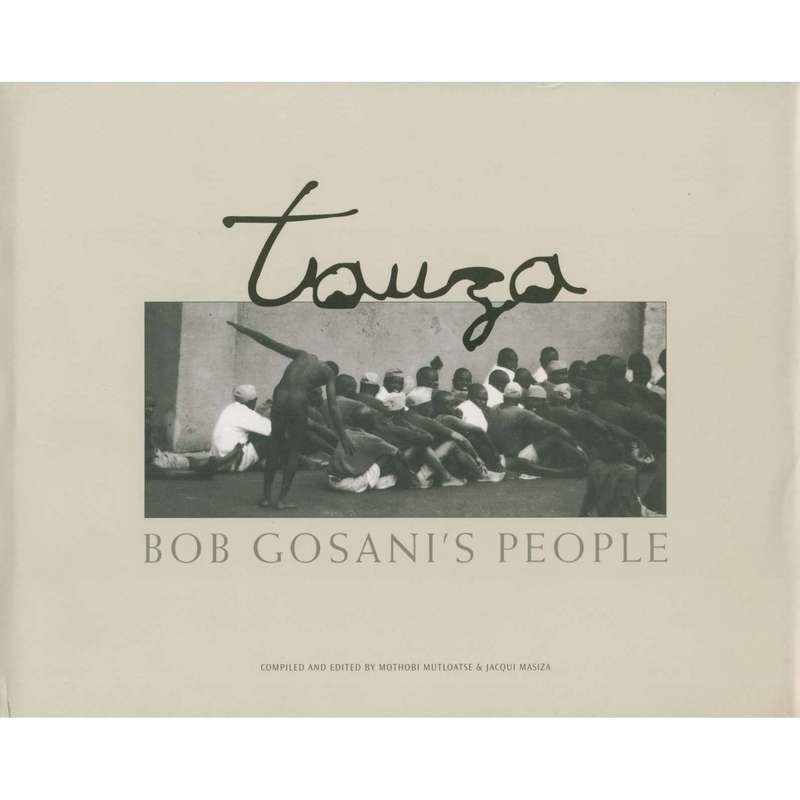
Tauza: Bob Gosani's People (DRUM MAGAZINE)
Check my rate
| Main centres: | 1-3 business days |
| Regional areas: | 3-4 business days |
| Remote areas: | 3-5 business days |

| Main centres: | 1-3 business days |
| Regional areas: | 3-4 business days |
| Remote areas: | 3-5 business days |
Published by Struik Publishers (Pty) Ltd, 2005, hardcover, illustrated with fine b/w photographic imagery, landscape format, 27.7 cms x 22 cms, condition; as new.
'Drum' was first known as 'The African Drum', launched by Robert Crisp, a journalist and broadcaster, supposedly to depict Black South Africans as 'noble savages'. The South African government allegedly sent copies abroad to make evident their success in managing the 'Bantu'. The content consisted mainly of tribal preaching and folk tales, and despite a readership of about 20 000, the magazine was not financially successful.
It was only when Jim Bailey a former RAF pilot and the son of a South African mining baron took over the magazine in 1951 that the publication grew. Bailey soon moved the magazine's headquarters to Johannesburg and re-named it Drum. The image of the magazine was transformed, and its content began highlighting urban black culture. The magazine became an important platform for emergent African nationalist movements.
Anthony Sampson, a friend of Bailey's from Oxford, was appointed editor, and under his leadership the magazine continued to grow and widely influence the new urban black culture.
To ensure that the magazine reflected Black life, they established an editorial board that included some of the leading political and cultural figures of the time: Joe Rathebe, Dan 'Sport' Twala, Dr Alfred Xuma and Andy Anderson. The board met once a month to generate ideas for new articles. The few staff members at this time consisted of a secretary, Sampson and sports editor Henry Nxumalo, who later became known as 'Mr Drum'.
As there were no educational facilities for black journalists and photographers at this time, many attached themselves to this publication as it allowed them to practise their craft. There were few magazines like Drum, and it attracted those interested in writing and photography and allowed them to develop their skills.
Photography was an especially important component of Drum's success, especially because photography served as an accessible and 'realistic' means with which to document protest action, and appeal to a largely illiterate readership. Drum's picture features bright covers, jazz, girls and crime stories appealed to readers, and the magazine's circulation increased.
Some of the first photographers included: Jurgen Schadeberg, an investigative photographer who later became the photo editor of the magazine; Bob Gosani, who started off at Drum as a messenger, but was later moved to the photographic department, where he became Schadeberg's darkroom assistant, and went on to become one of the magazine's best photographers; and Peter Magubane, who was hired in 1955 as a driver and a messenger, but over time became more interested in photography, and was eventually transferred to the photographic department.
This group was later joined by Ernest Cole, Alf Kumalo, Victor Xashimba, Gopal Naransamy, Chester Maharaj, GR Naidoo and others.
In some instances, Drum photographers had to develop tactful methods of obtaining photographs to avoid the wrath of white officials and the confiscation of their equipment. In one such instance photographers Bob Gosani and Arthur Maimane posed as white secretary Deborah Duncan's 'lackeys' in order to obtain photographs to complement Henry Nxumalo's first-hand account of oppressive prison conditions.
Drum writers included Peter Abrahams, Alex la Guma, Es'kia Mphahlele and Richard Rive. All wrote compelling stories, often using satire and irony in their depictions of Black South African life. They went on to achieve international recognition.
Other writers included Todd Matshikiza, who was celebrated for his wit, and employed as the music reviewer. Can Themba, a teacher in Sophiatown, won a Drum writing competition and was offered a job as a writer for the magazine. Towards the end of the 1950s, Lewis Nkosi and Nat Nakasa joined the Drum team. The writers used the language of American writers and movies, and created a fast, slangy street talk that few have been able to imitate. Nakasa later established a literary magazine called The Classic and won a Nieman Fellowship to study journalism in the United States. He left South Africa on an exit permit and was unable to return home.